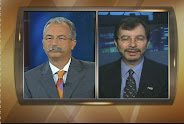
 For many, today’s date has a special social significance. For prudent investors, however, today is a day that this year marks a point of caution – unless you buy into one of two arguments being passed about: stocks warrant a higher than average P/E or stocks have made their lows as certain trading patterns say the bottom has been formed.
For many, today’s date has a special social significance. For prudent investors, however, today is a day that this year marks a point of caution – unless you buy into one of two arguments being passed about: stocks warrant a higher than average P/E or stocks have made their lows as certain trading patterns say the bottom has been formed.
Fundamentals First
For those who favor the first point, the arguments I hear reference inflation and the appropriate P/E for stocks. Historically, when inflation runs in the low single digits P/Es have tended to be in the higher teens – above the long-term average of 15 times. All well and good provided other conditions in the economic and financial arena are balanced - which they are not. What makes the low inflation=higher P/E argument more than a touch suspect is, frankly, a blind faith in the ability of the Fed (and other central banks) to time the withdrawal of monetary stimuli BEFORE inflationary pressures begin to build – which, if unsuccessful, would thereby blow up the low inflation leg of this fundamental stool. More importantly, given the highly fluid nature of the global economic and political environment (can you say "nukes and Pakistan"?), ascribing an above average P/E during above average times of risk (despite whatever may be possible - not probable - in the inflation end of the equation) seems to require an above average degree of faith and a below average degree dispassionate logic.
Now The Technicals
As for the technicals of the market, certain technicians of the chart pattern stripe note the various breakouts as reasons supporting the “bottom has been formed” argument. There are others, however, who are purists in this chart pattern field who would counter argue that only when a completed bottom has been made in the major indices can a bottom-has-been-formed view be agreed to. Since I am not a chart pattern guy, I will leave this debate to those in the two camps. What I will put forth is something readers of this blog are very well aware of – the Mega Trend.
The Mega Trend is the Investor's Friend
Only when price is above both moving averages AND the 50 day has crossed the 200 day AND both the 50 day and 200 day have turned up can an investor confidently declare a Mega Trend change has occurred and a new market cycle is underway. Let’s look at the performance record in this regard using two indices as evidence – SPX (S&P 500) and EFA (Europe and Asia).
As both above charts* show, when a Mega Trend occurs that trend tends to stay in place for years. In this longer-term context, you can see that considerable improvement has occurred recently, HOWEVER, neither index is fulfilled the requisite conditions to warrant a Mega Trend signal change. Price is not above its 200 day moving average and the 50 day has not crossed the 200 day. Therefore, while the 50 day has turned up and the 200 day has begun to flatten all conditions have not been met and should not be anticipated to do so until they do so. (Or as Yogi Berra would say, "It ain't over 'til it's over".)
At present, to achieve all facets of a bullish Mega Trend stocks must build on their 30% plus rally thus far and rise significantly further from here, which, unfortunately, will produce a set of overbought conditions that are unlikely to be sustained. Moreover, any further near term rally would put both indices in a sharp near term uptrend, which is not indicative of the bottoming process that precedes a Mega Trend reversal. In this regard, there are several near and short term technical analysis reasons (momentum and MACD, Slow Stochastics, respectively) that argue against stocks making such a move anytime soon.**
Investment Strategy Implications
To be clear, Sinko de Mayo does not mean Plungo de Mayo. It simply means equities have gotten more than a touch ahead of themselves and some contraction, a healthy contraction, would be best. Since articulating cyclical bullish sentiments in early March, readers of this blog acting on the views expressed have enjoyed a very healthy boost to their portfolios. Now, however, we seem to be at the opposite end of that spectrum for exactly the same reasons - only in reverse. Therefore, when both fundamental and technical analysis flash the yellow caution signal, it is advisable to, at a minimum, maintain the equity percentage of a portfolio through selective selling.
Going forward: Sinko de Mayo will likely be followed by Drifto the Summero leading to Uh Oh the Fallo. Enough with the bad rhymes. Let’s go make some money.
*click images to enlarge
**for more information on this, see yesterday’s complementary report offer. If you have not received such an offer, simply click on the link to your left in the Twitter updates sidebar.
 As equities close in on a third up month in a row, a few words on investors' faith that better times lay ahead.
As equities close in on a third up month in a row, a few words on investors' faith that better times lay ahead.






























